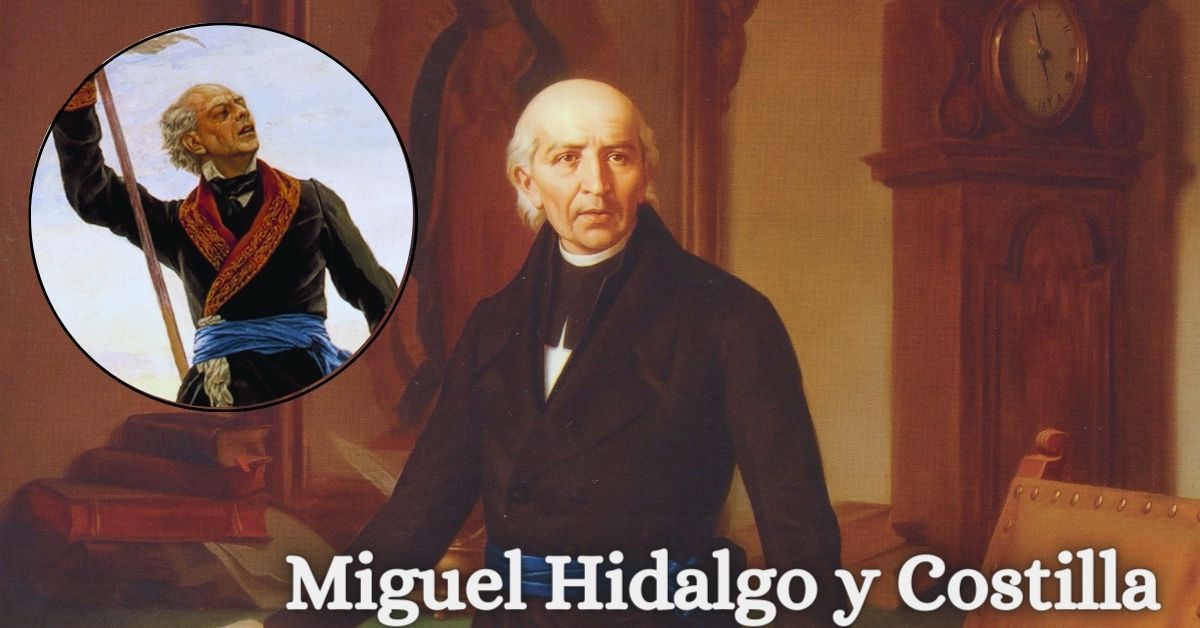Don Miguel Gregorio Antonio Ignacio Hidalgo y Costilla y Gallaga Mandarte Villaseñor is widely acknowledged as the “Father of the Nation” of Mexico for his leadership role in the country’s fight for independence from Spain.
Hidalgo was fired from his position as a professor at the Colegio de San Nicolás Obispo in Valladolid in 1792 because of the influence of Enlightenment ideals on his teaching. At the beginning of his ministry, he worked in a church in Colima and then he moved to Dolores.
He was taken aback by the fertile soil he discovered upon his arrival. He intended to aid the poor by teaching them to cultivate olives and grapes, but doing so was discouraged or outright forbidden by colonial authorities in New Spain (present-day Mexico) to protect Spanish exports.
On September 16, 1810, he delivered a speech known as the “Cry of Dolores” in which he urged the populace to rise up in rebellion against the European-born Spaniards who had overthrown Spanish Viceroy José de Iturrigaray. King Ferdinand VII had been captured by the British during the Peninsular War.
The Birth of Miguel Hidalgo y Costilla
On May 8, 1753, his parents brought him into the world at the Hacienda de San Diego Corralejo, Pénjamo. His parents were Cristóbal Hidalgo y Costilla, administrator of Corralejo and Ana Mara Gallaga, who bore him the second of four children.
His full name is Miguel Gregorio Antonio Ignacio and he was christened on May 16, 1753, in what was then the capital of Cuitzeo de los Naranjos but is now the city of Abasolo in the state of Guanajuato.
Miguel Hidalgo and his brother José Joaqun enrolled in the Collegio de San Nicolás Obispo4 in Valladolid, the capital of the state of Michoacán, in June 1765. Antonio de Mendoza y Pacheco, the first viceroy of New Spain, established the college in 1547.
He later gave the university and the structure in which it was located to the members of the Society of Jesus, who set up departments of Latin, law and the priesthood.
The Hidalgo brothers did their schoolwork here until 1767. King Carlos III of Spain and his minister, the Count of Floridablanca issued an edict on June 25, 1767, expelling all Jesuits from Spanish territory.
The biographies of the following individuals can be found in our subsequent posts given below:
- Who Is TikTok CEO Shou Chew? His Inspiring Journey From Builder’s Son to Businessman
- Who is Holly Robinson Peete? The Inspiring Story of American Actress
- Who is Chance the Rapper? His Journey of Creativity and Music Passion
The Intellectual Education of Miguel Hidalgo
Hidalgo learned the Latin language and read the works of great authors like Cicero, Ovid, Saint Jerome and Virgil. He was a teacher of philosophy and theology by the time he was seventeen and his shrewdness at intellectual games gained him the moniker “El Zorro” among his peers.
In preparation for his role as parish priest of Dolores, he studied French and read Molière, an author he would come to represent. Since the Pénjamo area was one of the regions with a greater diversity of indigenous groups and contact between the native world and the Spanish.
Hidalgo learned many of the indigenous languages spoken in New Spain through his childhood contact with the workers on his farm, most of whom were indigenous. These languages included Otomi, Nahuatl and Purépecha.
Miguel Hidalgo was able to further his education by teaching Latin and philosophy to others thanks to his extensive background in the subject. From 1782 until 1792, he served his alma mater in various capacities as treasurer, instructor and beginning in 1788, rector after finishing his studies there. 7
Follow us on Twitter and check out the most recent posts for more content similar to this.
